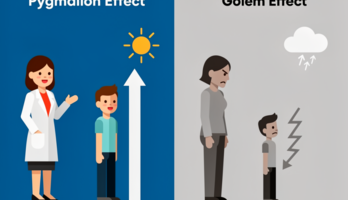Диссертация (1137914), страница 23
Текст из файла (страница 23)
(1939) An Essay in Dynamic Theory. Economic Journal, 49, 1433. http://dx.doi.org/10.2307/222518163.Hausman, J. A., and W. E. Taylor. 1981. Panel data and unobservableindividual effects. Econometrica 49: 1377–1398.64. Hausmann J., Lundsgaarde E. (2015) Turkey’s Role in developmentCooperation. United Nations University Centre for Policy Research. Режимдоступа:http://collections.unu.edu/eserv/UNU:3325/unu_cpr_turkey_dev.pdf65.Hoeffler A., Outram V. (2000) Need, Merit, or Self-Interest—WhatDetermines the Allocation of Aid?. Review of Development Economics,2000, 15(2), 237–250.66.Hynes, W., S. Scott (2013), “The Evolution of Official DevelopmentAssistance: Achievements, Criticisms and a Way Forward”, OECDDevelopment Co-operation Working Papers, No. 12, OECD Publishing.67.ICRC (2017) The world’s first “Humanitarian Impact Bond” launched totransform financing of aid in conflict-hit countries. Режим доступа:https://www.icrc.org/en/document/worlds-first-humanitarian-impact-bondlaunched-transform-financing-aid-conflict-hit68.Isopi, A., Mavrotas, G.
(2006) ‘Aid Allocation and Aid Effectiveness. AnEmpirical Analysis’, UNU-WIDER Research Paper No. 2006/0713469.Johnson, H. (1971). A word to the third world: A Western economist’s frankadvice. Encounter, 37, 3–1070.Kilby C. (2013) An Empirical Assessment of Informal Influence in theWorld Bank. Economic Development and Cultural Change, 2013, vol. 61,issue 2, 431 – 464.71.Kim, E.M.
and Oh, J.H. (2012) Determinants of foreign aid: The case ofSouth Korea. Journal of East Asian Studies 12: 251–273.72.Klasen S., Davies, R. B. (2011) Of Donor Coordination, Free-Riding,Darlings, and Orphans: The dependence of bilateral aid commitments onother bilateral giving. Proceedings of the German Development EconomicsConference, Berlin 2011. 47, Verein für Socialpolitik, Research CommitteeDevelopment Economics.73.Koo, J.W., Kim, D.. 2011. “World Society and Foreign Aid: ExplainingDeterminantsofKoreanODA,1989–2007.” KoreanJournalofSociology (in Korean) 45, 1: 153–19074.Laeven L., Valencia F. (2012) Systemic Banking Crises Database : AnUpdate.
IMF Working Paper No. 12/16375.Lal D. (1983) The Poverty of “Development Economics” London: Instituteof Economic Affairs – 126 p.76.Lal D. (1996) Foreign Aid: An Idea Whose Time Has Gone. EconomicAffairs 16 (4) 9-13, May 200677.Lewis W.A. (1954) Economic Development with unlimited supplies oflabour. The Manchester School, 22(2), 139-19178.Little I.M.D. (1982) Economic Development: Theory, policy, andinternational relations, New York: Basic Books.79.Lucas R. (1988) On the mechanics of economic development. Journal ofMonetary Economics, 1988, vol. 22, issue 1, 3-4280.Lundsgaarde E., Breunig C.
and Prakash A. Trade Versus Aid: DonorGenerosity in an Era of Globalization, Policy Sciences Vol. 40, No. 2 (Jun.,2007), pp. 157-17913581.Macdonald, R., Hoddinott, J. (2004) Determinants of Canadian Bilateral AidAllocations: Humanitarian, Commercial or Political? Canadian Journal ofEconomics/Revue Canadienne d`Economique 37(2):294-31282.Maizels, A., and M.
K. Nissanke. 1984. “Motivations for Aid to DevelopingCountries.” World Development 12 (09): 879–900.83.Mayer, T., Zignago, S. (2011) Notes on CEPII’s distances measures : theGeoDist Database CEPII Working Paper 2011-2584.McGillivray M., White H. Explanatory Studies of Aid Allocation amongDeveloping Countries: A Critical Survey. The Hague: ISS Working Paper148,1993.Availableat:https://repub.eur.nl/pub/18942/wp148.pdf(Accessed 04.08.2017)85.McGillivray, M., and E. Oczkowski (1992). ‘A Two-part Sample SelectionModel of British Bilateral Aid Allocation’.
Applied Economics, 24: 1311-9.86.McKinlay, R. D., and Little R.. (1978b). “A Foreign Policy Model of theDistribution of British Bilateral Aid, 1960-70,” British Journal of PoliticalScience, 8(3), 313-331.87.McKinlay, R.D., and Little R. (1977), “A Foreign Policy Model of USBilateral Aid Allocation,” World Politics, 30(1), 58-86.88.McKinley, R. D., and Little R.. (1978a).
“The French Aid Relationship: AForeign Policy Model of the Distribution of French Bilateral Aid, 1964-70,”Development and Change, 9, 459-478.89.Ministry of Foreign Affairs of Japan (2016) White Paper on DevelopmentCooperation 2016. www.mofa.go.jp/policy/oda/page22e_000815.html90.Mold A., Ölcer D., and Prizzon A. The Fallout from the Financial Crisis (3):Will Aid Budgets Fall Victim to the Credit Crisis?; OECD DevelopmentCentre Policy Insights No. 87, December 200891.Morissey O. Aid and Government Fiscal Behavior: Assessing RecentEvidence World Development, 2015, vol.
69, issue C, 98-10592.Moyo, D. (2009) Dead aid : why aid is not working and how there is a betterway for Africa. NY: Farrar, Straus and Giroux, 2009 – 182 pp.13693.Neumayer, E. (2003) What Factors Determine the Allocation of Aid by ArabCountriesandMultilateralAgencies?JournalofDevelopmentStudies 39(4):134-14794.Nunnenkamp, P., & Thiele, R. (2006). Targeting aid to the needy anddeserving: Nothing but promises. World Development, 29(9), 1177–1201.95.Nunnenkamp, P., H. Öhler and R. Thiele (2013). Donor coordination andspecialization: Did the Paris Declaration make a difference? Review ofWorld Economics 149(3): 537–563.96.O’Donnell G., Schmitter P., Whitehead L., 1986 Transitions fromAuthoritarian Rule: Prospects for democracy Baltimore/London, JohnsHopkins University Press, 198697.OECD (2003).
Rome Declaration on Harmonisation 2003. Режим доступа:http://www.oecd.org/dac/effectiveness/31451637.pdf98.OECD (2014a) Development Cooperation Peer Reviews UK. Режимдоступа: https://read.oecd-ilibrary.org/development/oecd-development-cooperation-peer-reviews-united-kingdom-2014_9789264226579-en#page199.OECD (2014b) OECD – DAC Development Brief: Where Do We Stand ontheAidOrphans?Режимдоступа:https://www.oecd.org/dac/aid-architecture/Aid%20Orphans%20Development%20Brief.pdf100.OECD (2015) Infrastructure Financing Instruments and Incentives,OECDPublishing,Paris,http://www.oecd.org/finance/private-pensions/Infrastructure-Financing-Instruments-and-Incentives.pdf101.OECD (2016) Development Cooperation Peer Reviews United States.Режимдоступа:https://read.oecd-ilibrary.org/development/oecd-development-co-operation-peer-reviews-united-states2016_9789264266971-en#page1102.OECD (2018) Development Co-operation Report 2018: JoiningForcestoLeaveNoOneParis, https://doi.org/10.1787/dcr-2018-en.137Behind,OECDPublishing,103.Oh J., Song J.
(2018) Dual determinants: Aid disbursement andvolume, with special reference to Japan. Asia Pacific Management Review,2018.104.Pallage, S., Robe, M. A., & Beroube, C. (2006). The potential offoreign aid as insurance. IMF Staff Papers, 53(3), 453–475.105.Purnendra J. (2016) Japan's foreign aid: old and new contests. ThePacific Review. Vol. 29, 2016. Issue 1: Domestic Politics of Aid in PacificAsia.106.Richard T. Griffiths (2016) Configuring the World: A CriticalPolitical Economy Approach. Leiden: HIPE Publications107.Romer P.M. (1986) Increasing Returns and Long-Run Growth.
TheJournal of Political Economy, Vol. 94, No. 5. (Oct., 1986), pp. 1002-1037108.Roodman D. (2008) "History Says Financial Crisis Will SuppressAid"; Center for Global Development, Blog of 13 October 2008.109.Rostow W. (1961) The Stages of Economic Growth: A Non-Communist Manifesto. Cambridge: CUP.110.Rouis M., Shomakhmadova O. (2018) Arab Aid on the Rise 2011-2016. MENA Knowledge and Learning. Quick Notes Series. February 2018.No 163.111.Round J.I., Odedokun M. (2004), Aid Effort and Its DeterminantsInternational Review of Economics and Finance 13, 2004, стр. 298-300112.Sachs, J.
(2005), The End of Poverty: Economic Possibilities for OurTime, Penguin Press: New York.113.Schraeder, P. J., S. W. Hook, and B. Taylor. 1998. “Clarifying theForeign Aid Puzzle: A Comparison of American, Japanese, French, andSwedish Aid Flows.” World Politics 50 (02): 294–323.114.Sexton, E., Decker, T. (1992). US Foreign Aid: Is it for Friends,Development, or Politics. The Journal of Social, Political, and EconomicStudies, 17 (3 and 4), 303-315.138115.Shushan D. Marcoux C. (2011) Arab Aid Allocation in the Oil Era.AidData Brief 2.
November 2011.116.Solow R. (1956) A Contribution to the Theory of EconomicGrowth, The Quarterly Journal of Economics, Volume 70, Issue 1, 1February 1956, Pages 65–94, https://doi.org/10.2307/1884513117.Streeten, Burki, Haq, Hicks, and Stewart (1981) First Things First:Meeting Basic Human Needs in Developing Countries, Published for theWorld bank by Oxford University Press, New York118.Szent-Ivanyi, B. (2010) Aid Allocation of the Emerging Central andEastern European Donors.
MPRA Paper No. 30234, posted 13. April 2011.Режим доступа: https://mpra.ub.uni-muenchen.de/30234/119.Tarp F., Bach C.F., Hansen H., Baunsgaard S. (1998) Danish AidPolicy: Theory and Empirical Evidence. Department of Economics,University of Copenhagen, 1998.120.Thiele R., Nunnenkamp P., Dreher A. (2007) Do Donors Target Aidin Line with the Millennium Development Goals? A Sector Perspective ofAid Allocation. Brief of World Economics. December 2007, Vol. 143,Issue 4, pp. 596-630121.Tong H., Wei S.-J. (2008) The Composition Matters: Capital Inflowsand Liquidity Crunch During a Global Economic Crisis The Review ofFinancial Studies Vol.
24, No. 6, The Academic Analysis of the 2008Financial Crisis (June 2011), pp. 2023-2052122.UN (1961) “United Nations Development Decade, A Programme forInternational Economic Co-operation (I),” General Assembly resolution1710 (XVI),19December1961.https://documents-dds-ny.un.org/doc/RESOLUTION/GEN/NR0/167/63/IMG/NR016763.pdf?OpenElement123.UN(2002)конференциипоМонтеррейскийконсенсусфинансированиюразвития.МеждународнойРежимдоступа:http://www.un.org/ru/documents/decl_conv/declarations/monterrey.shtml139124.UN (2015) Improving ODA allocation for a post-2015 world.http://www.un.org/en/ecosoc/newfunct/pdf15/un_improving_oda_allocation_for_post-2015_world.pdf125.UNDP (2010) Human Development Report 2010.
The Real Wealth ofNations:PathwaystoHumanDevelopment.http://hdr.undp.org/sites/default/files/reports/270/hdr_2010_en_complete_reprint.pdf126.USAid(2017)Mission,VisionandValues.https://www.usaid.gov/who-we-are/mission-vision-values127.Vázquez, S. T. (2008) The Spanish pattern of aid giving. WorkingPapers del Instituto Complutense de Estudios Internacionales 0804,Universidad Complutense de Madrid, Instituto Complutense de EstudiosInternacionales. Режим доступа: https://www.ucm.es/data/cont/docs/4302013-10-27-2008%20WP04-08.pdf128.Vejdeland S.
















